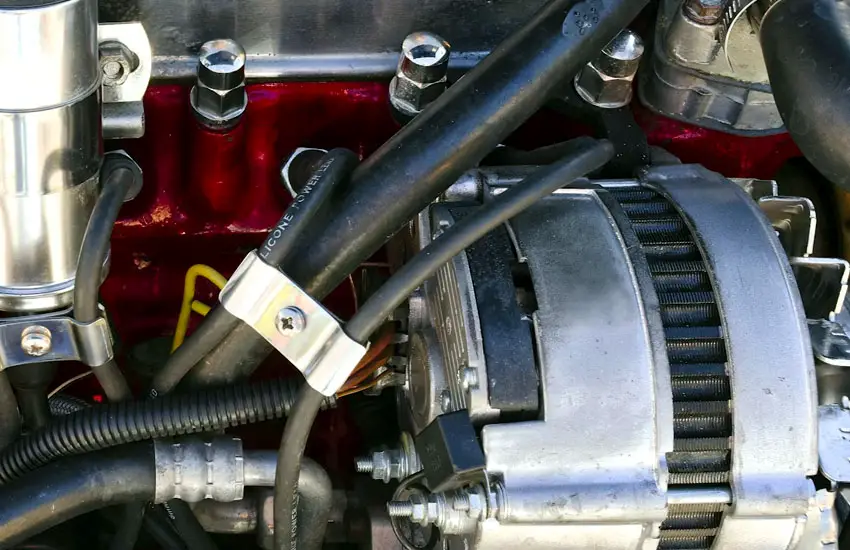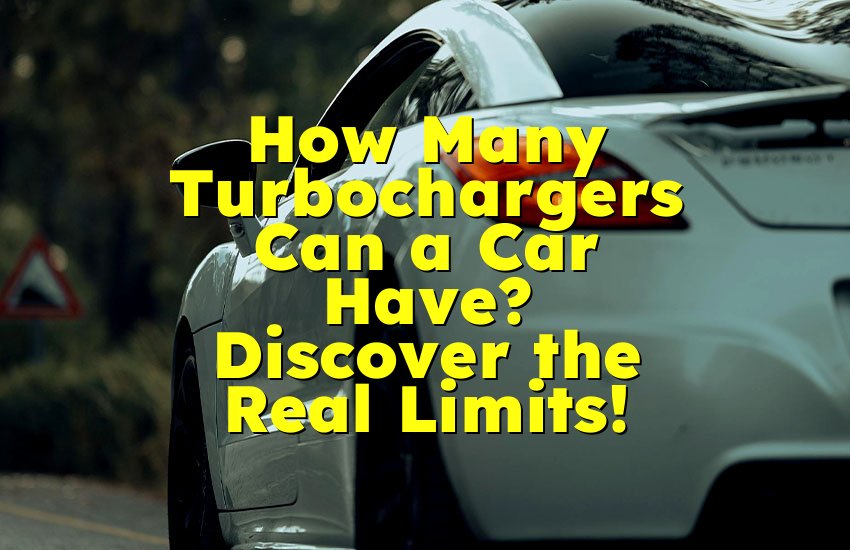As an Amazon Associate, I earn from qualifying purchases at no extra cost to you.
Changed Alternator Now Car Won’t Start: Troubleshooting Tips
It's a frustrating feeling when you've just replaced an important part in your car—like the alternator—and yet, your car still refuses to start. You're stuck, and now you’re unsure whether the new part is faulty or if something else is at play. Replacing the alternator should have solved your car’s power issues, but now you’re facing a different problem altogether.
In this post, we'll walk through the troubleshooting process to help you figure out why your car won't start after the alternator replacement. We'll cover common causes, potential issues that can arise after installation, and what you can do to resolve the situation. With a little patience and some careful checks, you'll be on your way to getting your car back on the road.
Why Won't My Car Start After Alternator Replacement?
When your car won't start after installing a new alternator, it's natural to wonder if the alternator is defective or if something else is the cause. To understand why this happens, it's important to know the role of the alternator in your car. The alternator powers your car's electrical system, keeping the battery charged and ensuring everything from lights to the engine control systems function properly.
When replacing the alternator, if something goes wrong during the installation process or if another underlying issue exists, your car may not start as expected. Here are some of the most common reasons why your car may still fail to start after alternator replacement.
1. Poor Connection of the New Alternator
A poor connection between the alternator and your car's battery or electrical system is one of the most common causes for a car not starting after alternator replacement. During installation, if the wires or connections weren't properly secured, it can result in an incomplete or intermittent electrical circuit. This can prevent the alternator from charging the battery properly or providing power to the car's essential systems.
If you suspect this is the issue, check all the wiring connections, including the positive and negative terminals, to make sure they are clean, tight, and properly installed. Pay special attention to the ground wire, as a loose ground can cause electrical malfunctions that prevent your car from starting.
2. Faulty or Weak New Alternator
It's possible that the alternator you installed is faulty, even if it was brand new or remanufactured. While most new parts go through rigorous testing, defects can still occur. If the alternator is not functioning as expected, it may not be providing enough power to charge the battery, and your car may fail to start.
One way to check the new alternator's functionality is by using a multimeter to test the voltage output. The alternator should provide a voltage between 13.8 and 14.5 volts when the engine is running. If the output is significantly lower or higher than this range, you may need to replace the alternator again.
3. A Dead or Weak Battery
A dead or weak battery is another common cause for a car not starting after alternator replacement. Even if the alternator is working correctly, if the battery was already weak or drained before the replacement, it may not have enough power to start the engine. The alternator recharges the battery while the car is running, but if the battery is too weak to hold a charge, it may not provide the necessary power to turn over the engine.
You can test the battery voltage with a multimeter. A healthy, fully charged battery should show a voltage of about 12.6 volts when the engine is off. If the voltage is lower than 12.4 volts, the battery may need to be charged or replaced.
4. Issues with the Fuse or Fusible Link
Another possible reason for a no-start condition after alternator replacement is a blown fuse or fusible link. Fuses protect your car's electrical systems from overloads or short circuits. If the alternator was installed incorrectly or the system was accidentally shorted, a fuse or fusible link could blow, preventing the car from starting.
Check the fuse box for any blown fuses, especially the ones related to the alternator, ignition system, or starting system. If you find a blown fuse, replace it and check whether the car starts. If the fuse continues to blow, you may need to trace the wiring for any shorts or problems that could be causing the issue.

Troubleshooting Your Car After Alternator Replacement
Now that you know some of the most common reasons for a car not starting after alternator replacement, it's time to dive into the troubleshooting process. There are a few important steps you can take to diagnose and fix the problem.
1. Double-Check the Alternator Installation
If your car won't start after replacing the alternator, the first step is to ensure that the alternator was installed correctly. Check all the wiring connections, including the power cables, the alternator's ground wire, and any small connectors that may have been disconnected during the process. Even a small mistake in installation can lead to big problems with the electrical system.
Check that the alternator's pulley is aligned properly with the serpentine belt. A misaligned pulley or improperly installed belt can prevent the alternator from functioning properly, which can cause starting issues. If you notice anything out of place, make the necessary adjustments.
2. Test the Alternator and Battery Voltage
If you're still having trouble, it's time to test the alternator and battery to see if they are functioning as expected. Use a multimeter to measure the battery voltage before and after the engine is started. A healthy, charged battery should show 12.6 volts when the engine is off. Once the engine starts, the alternator should increase the voltage to between 13.8 and 14.5 volts.
If the voltage output is too low or too high, the alternator may be defective or there may be a problem with the wiring. Additionally, test the battery itself to see if it's holding a charge. If the battery voltage is too low, it may need to be replaced.
3. Check for Blown Fuses or Fusible Links
As mentioned earlier, a blown fuse or fusible link can prevent your car from starting after alternator replacement. Inspect the fuse box for any fuses that may have blown during installation. If a fuse related to the alternator, ignition, or starting system is blown, replace it and test whether the car starts.
If the fuse continues to blow, it's likely that there's a deeper electrical issue, such as a short circuit, that needs to be addressed. In this case, it may be best to consult with a mechanic to diagnose the problem further.
4. Verify the Condition of the Battery
Even if the alternator is working fine, a weak or dead battery can still prevent your car from starting. If the battery is old, it may no longer be able to hold a charge, and the alternator may not be able to charge it sufficiently. Test the battery's voltage with a multimeter and check for signs of corrosion or damage on the battery terminals.
If the battery's voltage is too low, try jump-starting the car. If the car starts, the issue is likely a weak or dead battery. If the car still won't start after jump-starting, then the problem may lie with the alternator or another electrical component.
I hope this guide has provided helpful insights and troubleshooting tips for getting your car back on the road after alternator replacement. By following these steps, you can identify whether the issue is with the alternator, the battery, or the electrical connections. With a little patience and careful inspection, you'll be able to resolve the issue and get your car running again.
When to Seek Professional Help
If you've gone through the troubleshooting steps and your car still won't start, it may be time to seek professional help. Sometimes, diagnosing electrical issues can be tricky, and a mechanic will have the tools and expertise to pinpoint the exact problem. A mechanic can perform a more thorough inspection of the electrical system, alternator, and battery to identify the root cause of the issue and make the necessary repairs.
In some cases, the problem may not be related to the alternator at all. Issues such as a faulty starter motor, ignition switch, or fuel system problems can also prevent your car from starting, and a professional mechanic can help diagnose and fix these issues.
Are These Questions in Your Mind?
Is it possible that the alternator was defective when it was installed?
Yes, although rare, a defective alternator can cause your car not to start after installation. It's important to test the alternator to ensure it's working properly.
Can I fix a loose alternator connection myself?
Yes, you can fix a loose alternator connection by checking and tightening all the wiring to ensure proper connection.
Do I need to replace the battery after alternator replacement?
Not necessarily. However, if the battery was weak or dead before the alternator replacement, it may need to be replaced after ensuring the alternator is working correctly.
Is there any way to test the alternator without starting the car?
Yes, you can test the alternator's voltage output with a multimeter by checking the voltage at the battery with the car running.
Can a faulty fuse prevent the car from starting?
Yes, a blown fuse or fusible link can interrupt the electrical circuit and prevent the car from starting.
Is it normal for the alternator to make noise after installation?
No, if the alternator is making unusual noises after installation, it could be a sign of a problem such as a misaligned pulley or damaged bearings.
Do I need a professional to test the alternator's output?
While you can test the alternator's output with a multimeter, a professional mechanic can perform a more thorough diagnostic if you're unsure.
Is it okay to drive with a faulty alternator?
No, it's not safe to drive with a faulty alternator. A failing alternator can cause the battery to drain, leading to a complete power failure while driving.
Can the serpentine belt affect alternator performance?
Yes, if the serpentine belt is loose, damaged, or misaligned, it can prevent the alternator from charging the battery properly.
Do I need to replace the alternator if the battery is fine?
If the battery is fine but the car still won't start, the issue might be with the alternator or another component, and you may need to replace the alternator.











